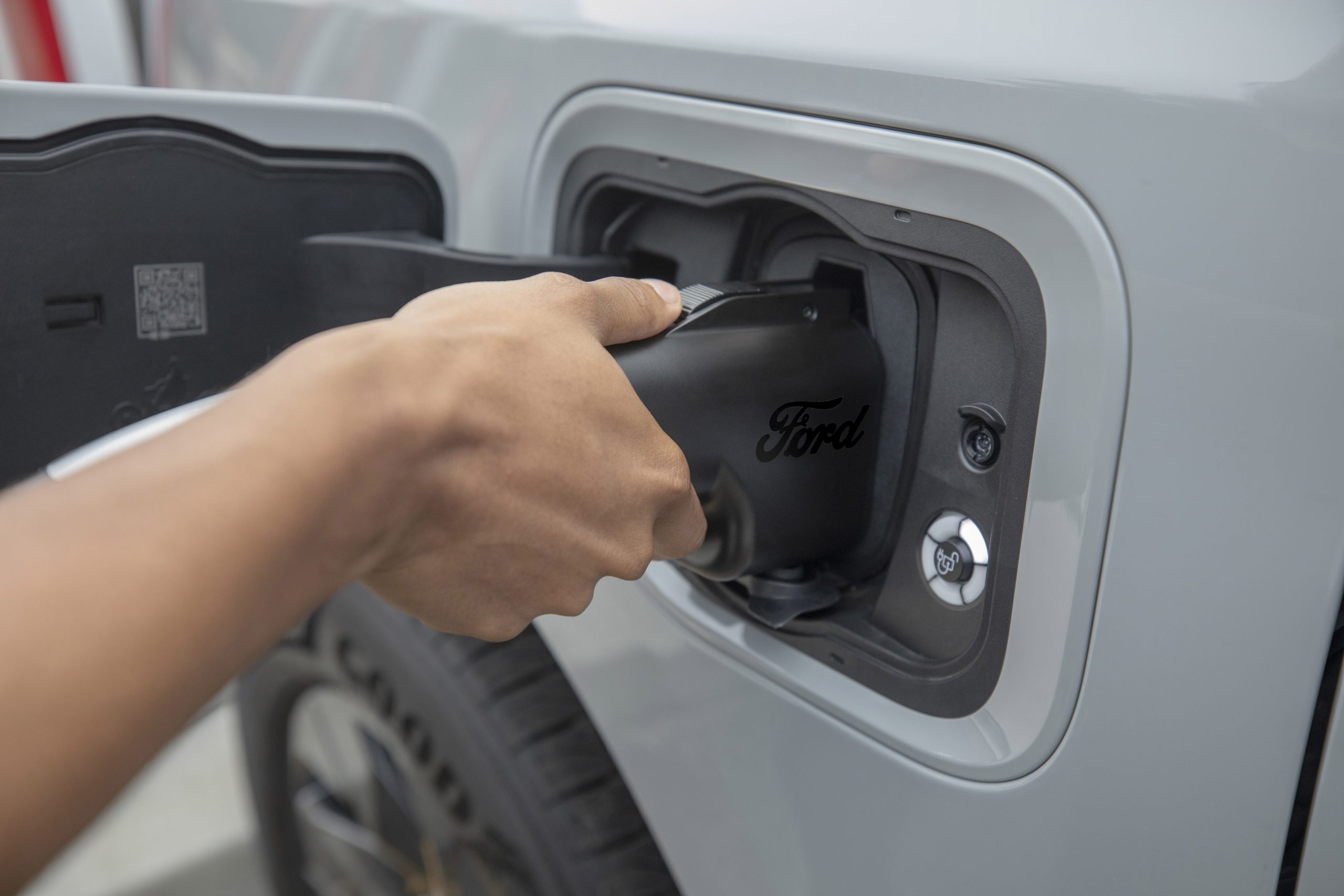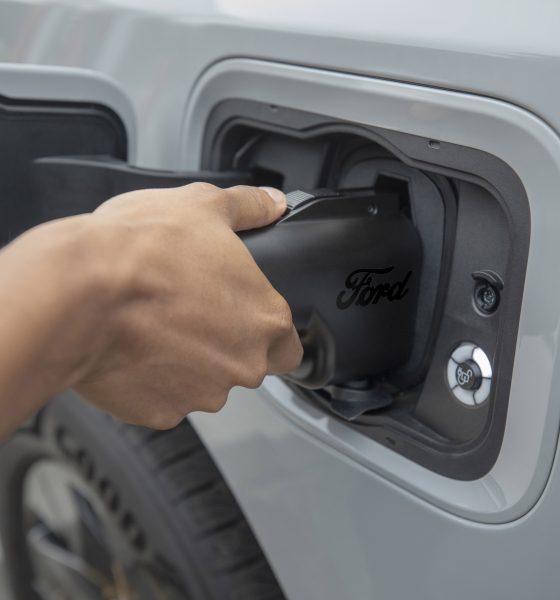As expected, the transition team for President-elect Donald Trump is now reportedly looking to slash support for electric vehicle (EV) and charging programs set up by the Biden administration, along with lodging global tariffs and pushing to ease regulations on fossil-fuel emissions.
The Trump transition team is now looking at plans to ease regulations on the fossil fuel industry and to cut many EV programs, including the $7,500 EV tax credit, along with lodging tariffs on battery material imports worldwide, according to a document seen by Reuters this week.
As part of efforts to bolster the domestic supply chain for battery materials, many of which are produced in China and are heavily subsidized in the U.S., the transition team has recommended imposing tariffs on all battery materials around the world, before negotiating individual exemptions with allies, as the document shows.
“When he takes office, President Trump will support the auto industry, allowing space for both gas-powered cars and electric vehicles,” said Karoline Leavitt, spokesperson for the Trump transition team, in a statement.
RELATED: U.S. Supreme Court to hear challenge on California emission rule waiver
Although Trump campaigned on promises to end the $7,500 federal EV credit and official plans to kill the subsidy were reported last month, the transition team has also called for rolling back the $7.5 billion plan passed under Biden to help aid the buildout of charging stations for EVs.
Instead, the team has said that it would shift this and other funding currently going toward making EVs more affordable toward national defense efforts, including the initiative to secure battery supplies without relying on China. The document notes that these efforts would focus on shifting money toward battery material production, as well as the “national defense supply chain and critical infrastructure.”
The document suggested that the team utilize Section 232 tariffs, which are intended to limit the import of any items related to potential national security threats. Biden recently increased tariffs on several imports related to charging technology and critical minerals for EV batteries, including graphite, “permanent magnets” used in EV motors and in military applications, and lithium-ion batteries, among others, though the tariffs were issued on economic grounds, rather than on those in national security.
The transition team is also looking to waive environmental reviews to accelerate “federally funded EV infrastructure projects,” such as those in battery production and recycling, charging deployment, and manufacturing of critical minerals. Other proposals detailed in the document include:
- Ditching federal requirements for electrifying government fleets, including Biden’s policy to mandate all federal purchases by zero-emission vehicles by the end of 2027
- Using the Export-Import Bank of the U.S. to provide financial support for U.S. batteries for EVs
- Utilizing tariffs as a “negotiating tool” to encourage other markets to consider U.S. auto exports including both gas cars and EVs
- Ending restrictions on exports of EV battery technology to countries deemed adversaries
- Ending programs for the Department of Defense attempting to buy or develop electric military vehicle options
How will ending the $7,500 EV tax credit affect Tesla? Musk calls it a benefit
While many have said that ditching the $7,500 tax credit and other policies intended to help spur on the adoption of EVs could hurt Tesla, CEO Elon Musk and others have argued that it may only benefit the company by harming other automakers even more. Wedbush analyst Dan Ives said last month that the change would only “enable Tesla to further fend off competition from Detroit,” given its already decisive advantage in EV scale.
In his latest statement regarding EV subsidies, made on X last month, Musk called for the U.S. to “end all government subsidies, including those for EVs, oil and gas.”
Musk also campaigned with Donald Trump during the election and created the political action committee (PAC), dubbed America PAC, to support his candidacy financially. He has since gained a position in what the team has called the Department of Government Efficiency, and he’s expected to play a major role in the upcoming administration.
In a report last week, it was said that the Trump transition team is also considering getting rid of a mandatory reporting measure for automated driving systems, as part of a larger effort to remove regulations and push self-driving vehicle development forward more quickly. An additional report from last month also suggests that Trump is already looking to create federal rules surrounding the rollout of autonomous vehicles, expected to accelerate the deployment of commercial robotaxis and other self-driving technologies.
What are your thoughts? Let me know at zach@teslarati.com, find me on X at @zacharyvisconti, or send us tips at tips@teslarati.com.
Analysts weigh in on Trump presidency’s effects to U.S. auto sector
Need accessories for your Tesla? Check out the Teslarati Marketplace:

News
Tesla Full Self-Driving shows confident navigation in heavy snow
So far, from what we’ve seen, snow has not been a huge issue for the most recent Full Self-Driving release. It seems to be acting confidently and handling even snow-covered roads with relative ease.
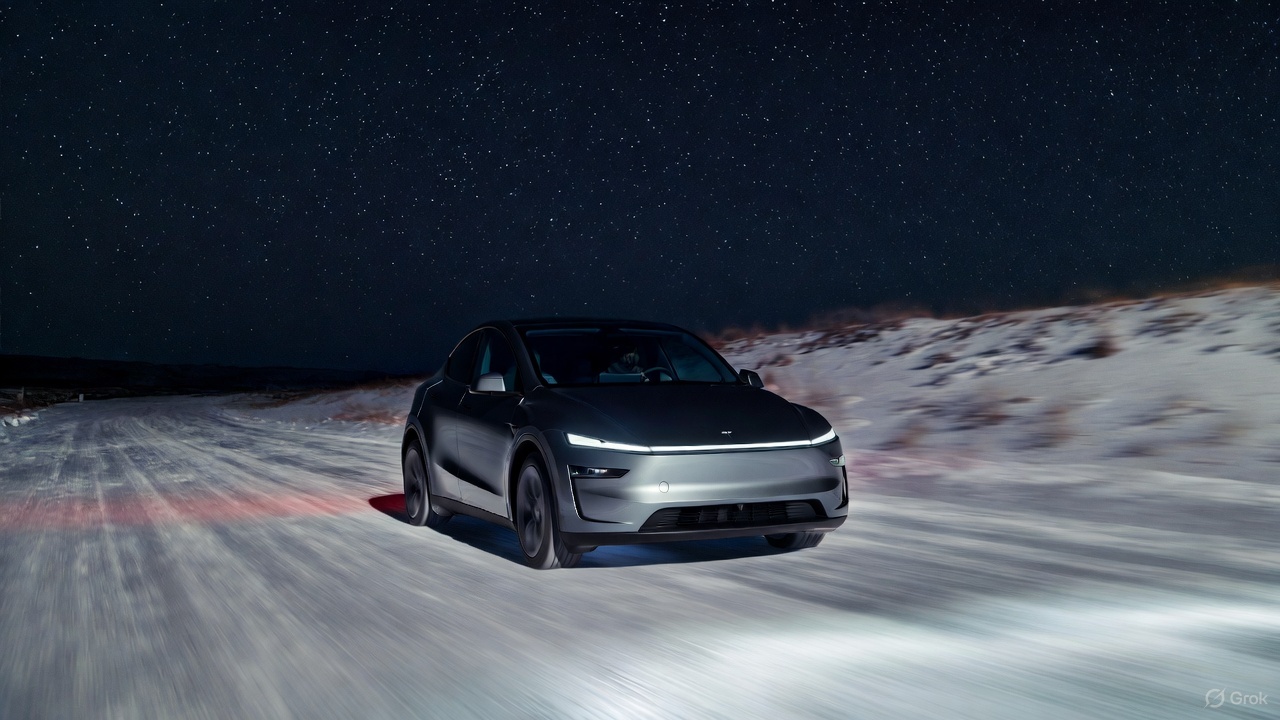
Tesla Full Self-Driving is getting its first taste of Winter weather for late 2025, as snow is starting to fall all across the United States.
The suite has been vastly improved after Tesla released v14 to many owners with capable hardware, and driving performance, along with overall behavior, has really been something to admire. This is by far the best version of FSD Tesla has ever released, and although there are a handful of regressions with each subsequent release, they are usually cleared up within a week or two.
Tesla is releasing a modified version of FSD v14 for Hardware 3 owners: here’s when
However, adverse weather conditions are something that Tesla will have to confront, as heavy rain, snow, and other interesting situations are bound to occur. In order for the vehicles to be fully autonomous, they will have to go through these scenarios safely and accurately.
One big issue I’ve had, especially in heavy rain, is that the camera vision might be obstructed, which will display messages that certain features’ performance might be degraded.
So far, from what we’ve seen, snow has not been a huge issue for the most recent Full Self-Driving release. It seems to be acting confidently and handling even snow-covered roads with relative ease:
FSD 14.1.4 snow storm Ontario Canada pic.twitter.com/jwK1dLYT0w
— Everything AI (@mrteslaspace) November 17, 2025
I found the steepest, unplowed hill in my area and tested the following:
• FSD 14.2.1 on summer tires
• FSD 14.2.1 on winter tires
• Manual drivingBut I think the most impressive part was how FSD went DOWN the hill. FSD in the snow is sublime $TSLA pic.twitter.com/YMcN7Br3PU
— Dillon Loomis (@DillonLoomis) December 2, 2025
Well.. I couldn’t let the boys have all the fun!
Threw the GoPro up and decided to FSD v14.2.1 in the snow. Roads were not compacted like the other day, a little slippery, but overall doable at lower speeds. Enjoy the video and holiday music 🎶
Liked:
Took turns super slow… pic.twitter.com/rIAIeh3Zu3— 🦋Diana🦋 (@99_Colorado) December 3, 2025
Moving into the winter months, it will be very interesting to see how FSD handles even more concerning conditions, especially with black ice, freezing rain and snow mix, and other things that happen during colder conditions.
We are excited to test it ourselves, but I am waiting for heavy snowfall to make it to Pennsylvania so I can truly push it to the limit.
News
Tesla hosts Rome Mayor for first Italian FSD Supervised road demo
The event marked the first time an Italian mayor tested the advanced driver-assistance system in person in Rome’s urban streets.
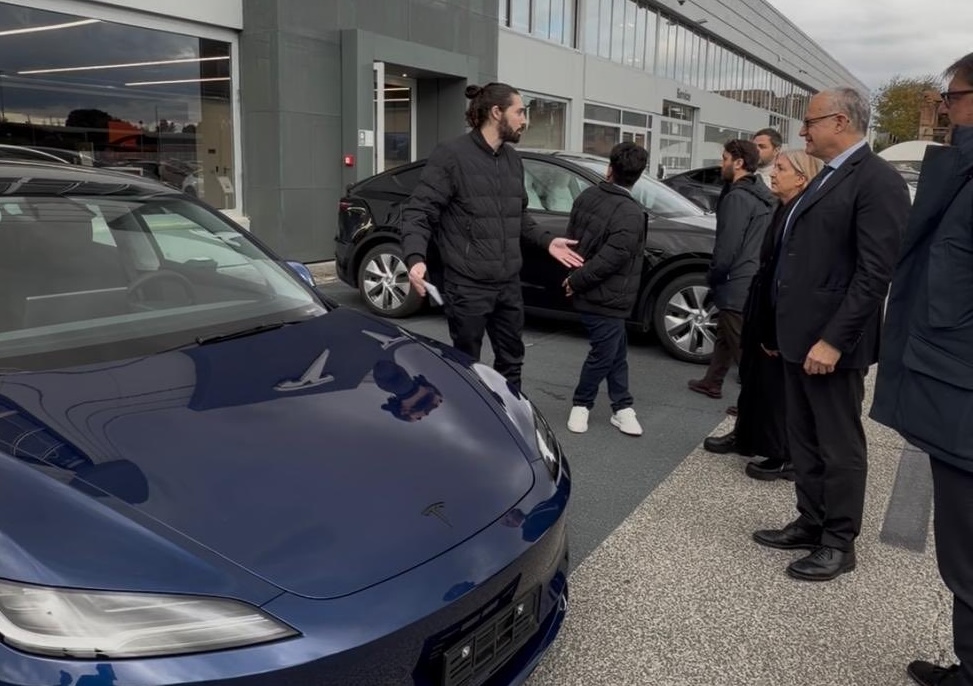
Tesla definitely seems to be actively engaging European officials on FSD’s capabilities, with the company hosting Rome Mayor Roberto Gualtieri and Mobility Assessor Eugenio Patanè for a hands-on road demonstration.
The event marked the first time an Italian mayor tested the advanced driver-assistance system in person in Rome’s urban streets. This comes amid Tesla’s push for FSD’s EU regulatory approvals in the coming year.
Rome officials experience FSD Supervised
Tesla conducted the demo using a Model 3 equipped with Full Self-Driving (Supervised), tackling typical Roman traffic including complex intersections, roundabouts, pedestrian crossings and mixed users like cars, bikes and scooters.
The system showcased AI-based assisted driving, prioritizing safety while maintaining flow. FSD also handled overtakes and lane decisions, though with constant driver supervision.
Investor Andrea Stroppa detailed the event on X, noting the system’s potential to reduce severe collision risks by up to seven times compared to traditional driving, based on Tesla’s data from billions of global fleet miles. The session highlighted FSD’s role as an assistance tool in its Supervised form, not a replacement, with the driver fully responsible at all times.
Path to European rollout
Tesla has logged over 1 million kilometers of testing across 17 European countries, including Italy, to refine FSD for local conditions. The fact that Rome officials personally tested FSD Supervised bodes well for the program’s approval, as it suggests that key individuals are closely watching Tesla’s efforts and innovations.
Assessor Patanè also highlighted the administration’s interest in technologies that boost road safety and urban travel quality, viewing them as aids for both private and public transport while respecting rules.
Replies on X urged involving Italy’s Transport Ministry to speed approvals, with one user noting, “Great idea to involve the mayor! It would be necessary to involve components of the Ministry of Transport and the government as soon as possible: it’s they who can accelerate the approval of FSD in Italy.”
News
Tesla FSD (Supervised) blows away French journalist after test ride
Cadot described FSD as “mind-blowing,” both for the safety of the vehicle’s driving and the “humanity” of its driving behaviors.
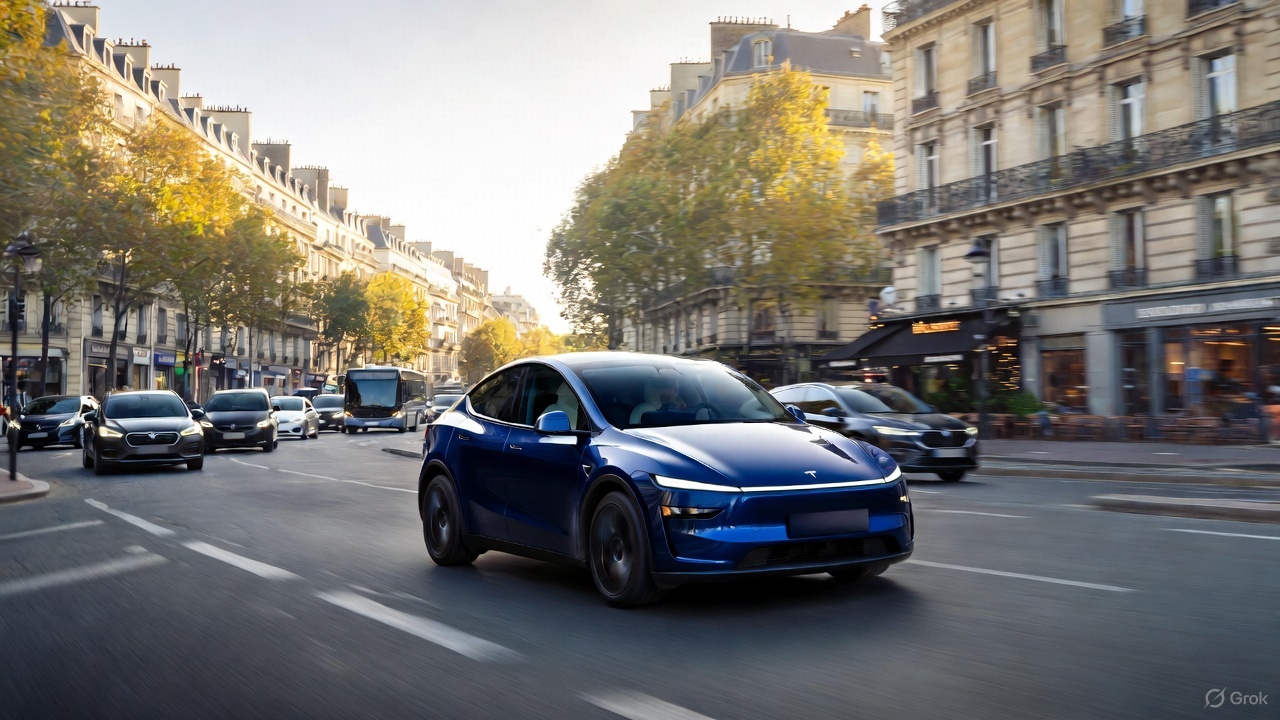
Tesla’s Full Self-Driving (Supervised) seems to be making waves in Europe, with French tech journalist Julien Cadot recently sharing a positive first-hand experience from a supervised test drive in France.
Cadot, who tested the system for Numerama after eight years of anticipation since early Autopilot trials, described FSD as “mind-blowing,” both for the safety of the vehicle’s driving and the “humanity” of its driving behaviors.
Julien Cadot’s FSD test in France
Cadot announced his upcoming test on X, writing in French: “I’m going to test Tesla’s FSD for Numerama in France. 8 years I’ve been waiting to relive the sensations of our very first contact with the unbridled Autopilot of the 2016s.” He followed up shortly after with an initial reaction, writing: “I don’t want to spoil too much because as media we were allowed to film everything and I have a huge video coming… But: it’s mind-blowing! Both for safety and for the ‘humanity’ of the choices.”
His later posts detailed FSD’s specific maneuvers that he found particularly compelling. These include the vehicle safely overtaking a delivery truck by inches, something Cadot said he personally would avoid to protect his rims, but FSD handled flawlessly. He also praised FSD’s cyclist overtakes, as the system always maintained the required 1.5-meter distance by encroaching on the opposite lane when clear. Ultimately, Cadot noted FSD’s decision-making prioritized safety and advancement, which is pretty remarkable.
FSD’s ‘human’ edge over Autopilot
When asked if FSD felt light-years ahead of standard Autopilot, Cadot replied: “It’s incomparable, it’s not the same language.” He elaborated on scenarios like bypassing a parked delivery truck across a solid white line, where FSD assessed safety and proceeded just as a human driver might, rather than halting indefinitely. This “humanity” impressed Cadot the most, as it allowed FSD to fluidly navigate real-world chaos like urban Paris traffic.
Tesla is currently hard at work pushing for the rollout of FSD to several European countries. Recent reports have revealed that Tesla has received approval to operate 19 FSD test vehicles on Spain’s roads, though this number could increase as the program develops. As per the Dirección General de Tráfico (DGT), Tesla would be able to operate its FSD fleet on any national route across Spain. Recent job openings also hint at Tesla starting FSD tests in Austria. Apart from this, the company is also holding FSD demonstrations in Germany, France, and Italy.
